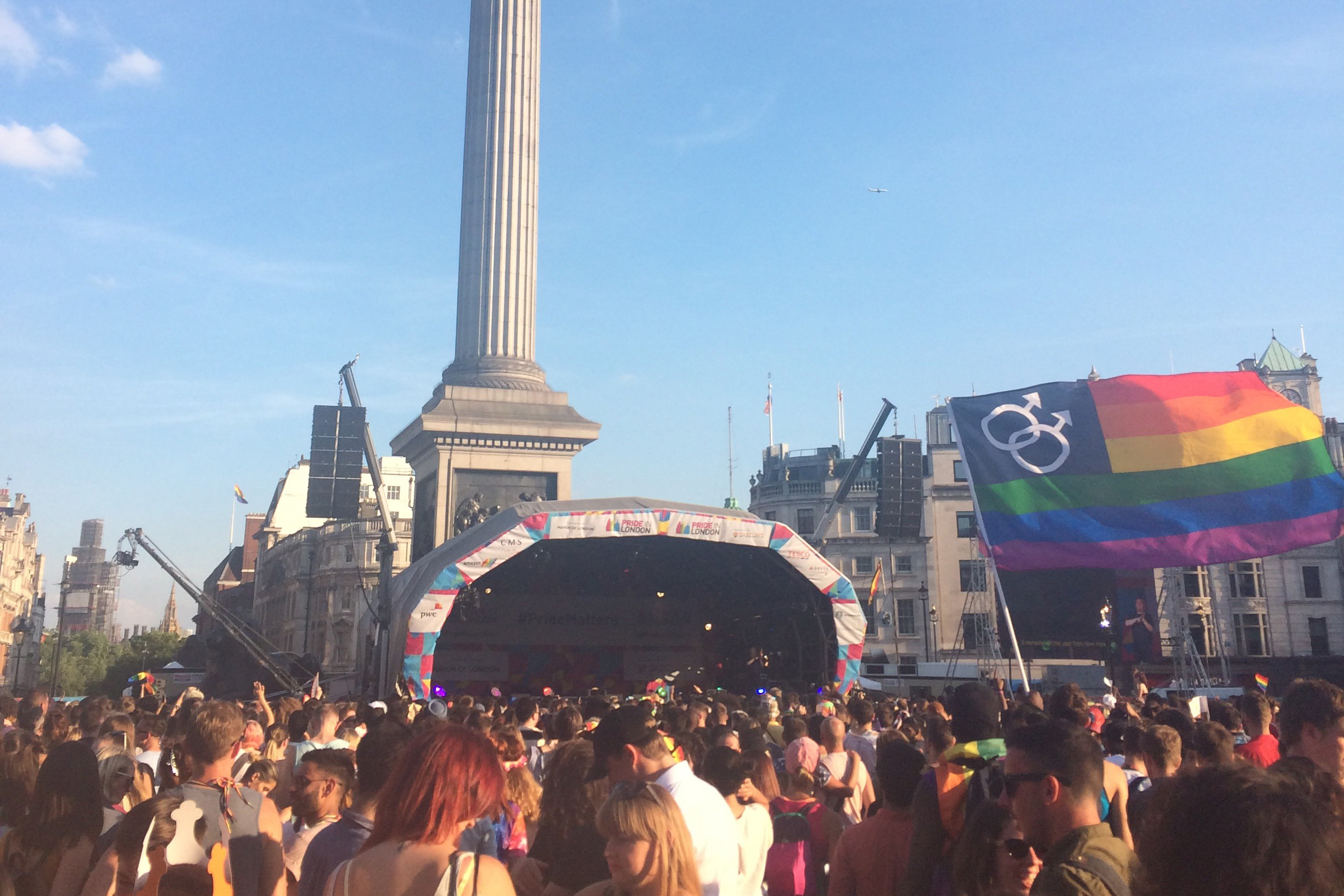As part of our Music Made Us campaign, creatives, music professionals, experts and journalists reflect on how music has been there for us through good times and tumultuous periods that inspire change. Throughout generations, music has sparked, supported and commented on movements, memories and moments in time.

In times of trouble, it is common for people to seek solace in the words of those who have gone before them. Whether it is a biblical scripture or something your grandad always said to you when you were little, these little bits of wisdom help us keep the faith through the tough times and dream of the light at the end of the tunnel.
For most young people, nothing sums up their sentiments quite as good as the opening of Primal Scream’s ‘Loaded’, and it’s never felt more appropriate than now. As we sit in our rooms thinking about what we were doing a few years back and what we should be doing now, we should seek comfort in the fact that we will NOT be this way forever. How do I know? Because history tells me so.


In 1967, the world was a powder keg. The war in Vietnam continued to incite protests worldwide as rallies began to multiply in opposition, there was a growing conflict in the Middle East, and America’s streets were in ruins with riots and looting. On the surface, it was a very hostile place – but if you scratch beneath the surface and take a look behind it, the fuse had already been lit.
The Haight-Ashbury area of San Francisco quickly gained notoriety as a melting pot of people and personalities who shared the same ideals – opposing the growing cultures of consumerism and war. Thousands of ‘hippies’ were flocking from all over the US to Haight-Ashbury for their share of the love. Timothy Leary told the masses to “turn on, tune in and drop out”, and the ‘summer of love’ had begun.
Back in Blighty, it was a massive year for culture, and the counterculture was dictating it. The realms of acceptability were about to be stretched and tie-dyed. It’s easy to think of the 1960s as a Lowry-like pastiche of slate-grey, industrial misery. But someone was about to spill the paint pot. The Beatles released their magnum opus, Sgt. Pepper’s Lonely Hearts Club Band. The album reflected the changing attitudes of the contemporary youth and explored the growing trends of hedonism and psychedelia. It was as if someone had opened the curtains and let the sun shine through.
The BBC reorganised their radio stations in response to the popularity of the early sixties pirate radio movement. What was once the voice of the underground could now be heard in homes all over the United Kingdom. The youth finally had their voice, and soon there’d be a place to go.
Acclaimed businessman Peter Stringfellow had noticed what was happening in Haight-Ashbury and decided to bring the sunshine to Sheffield. “Watching the news at home one afternoon, I saw footage of San Francisco, where there were kids jumping around – some naked, some wearing kaftans – with flowers in their hair. I just thought it was fantastic and brilliant. I decided to transform King Mojo from a soul and pop art venue to a hub of the Flower Power movement. I gathered students from the university and we went to town redecorating, making it all psychedelic and magical”.
It feels ironic that this was also the year of the first colour broadcast on the BBC; such an appropriate metaphor. It was almost as if the dark fog of the early 1960s had been lifted and replaced by gold and deep blue hues. Those once repressed were now outlandishly dressed in the kaftans and flowers. It was no longer a case of following tradition or putting up and shutting up. The nation’s youth peered through the looking-glass, rather than twitching the curtains, and liked what they saw. There was no more time for fear, only for free love. It makes you think, doesn’t it? Could anything like this happen again?
Well, have I got a tale to tell you.


It’s 1988, and a lot has happened since the ‘Flower Power’ movement of 1967. The honeymoon period was over and the comedown began to set in.
Black clouds began to gather during the 1970s. The English were gaining a bad reputation abroad due to the chaos that football hooligans would bring to the quaint villages of Europe. England was ruled by an iron lady with an iron fist. A constant barrage of totalitarian policies meant the rich were getting richer and the poor stayed in the gutter. It was the main ingredient of a revolution; all we needed was a catalyst – and, of course, a soundtrack.
In 1986, Danny Rampling, along with his mates Nicky Holloway, Paul Oakenfold and Johnny Walker, returned from a week in Ibiza with a little more than a suntan and some duty-free cigarettes. They had discovered a new type of music. They had been brainwashed by the resident DJs at Amnesia with Balearic beats and decided to bring them home. The blueprint for what Tony Wilson called “as big a youth explosion as has ever happened in this country” was drawn up. By 1987, Rampling was running Shoom – one of the first acid house clubs in the UK. The seeds were being sown. I present to you the second ‘summer of love’.
“There’s no such thing as society.” – Margaret Thatcher
In 1989, the entire country was awash with acid house. The socio-economic barriers imposed by Thatcher’s government were being broken down as people from all walks of life came together to party and be free. The woman who famously said “there’s no such thing as society” was beginning to eat her words, whilst the rest of the country was swallowing something else.
Like LSD in 1967, MDMA – also known as ecstasy – fuelled the ravers. Its effects led to an increased outpouring of love and emotion. In the infamous Hacienda in Manchester, clubber Catherine Obi took a look around at the sea of people and stopped for a moment: “It was like mass hysteria. But that was what was so good about it. Suddenly, it was like, oh my god, look – everyone’s in it together! One nation under a groove.” A nation divided once by class and culture, all under one roof raving. It was a beautiful thing to see; it gave a lot of people hope that the sun could shine again.
I know this isn’t 1967 or 1989 – and the world has changed since then – but the similarities between then and now are startling. If there’s one thing that being trapped inside for over a year has taught us, it’s that you can’t beat human interaction. You can’t beat the sweat dripping off the black walls of a tiny venue; the butterflies in your stomach as you queue up; the hangovers; the regrets; cringing at your bank balance, and all the rest – it just can’t be replicated.


Just because Covid-19 pressed mute doesn’t mean that the music isn’t still playing. There are boys and girls holed up in bedroom studios as I type. They’re creating and expressing themselves and they never stop. This next ‘revolution’ will not be televised. Instead, it’s happening under your nose. This next wave – and that of 1967 and 1989 – has proved that creation conquers all in a world full of division and restriction.
The beauty of now, however, stems from hindsight. This musical revolution won’t be the first; it will be a melting pot of the best bits so far. It will be a collage of punk, acid house, indie and grime, to name just a few. And with that in mind, It’s hard to say what will define an era when there’s something for everyone.

The new decade has seen the rise of the industrial acid-warbles of bands like Working Men’s Club, the political prose of Sleaford Mods and the concrete realism of urban artists like J-Hus and Headie One – and that’s just what’s tipped by the tastemakers. The new generation is waiting side-stage. Imagine all the music we’re about to hear, from the artists we love and the artists we’re about to fall in love with.
Throughout the ages, there has always been something that has tried to turn us against each other, and sometimes it feels like it has won. We can’t let them win. As the light at the end of the tunnel gets brighter with each prick of the needle, we need to come together. Your mate’s band: they’re going to need you. Your local pub: it’s going to need you. Your friends: they’re going to need you. The world will need us, and we’ve all got to play our part.
Look at 1967 and 1989. The only reason there’s a story to tell is because of the people. It’s the people who keep the world turning, and it’s the people who can change it. This summer could see us taking to the industrial spaces of the UK to dance for hours to repetitive beats like 1989 or dazing in the sunshine in a festival field like 1967. The DIY aesthetic has become prevalent over the past year, which could become the way forward. Anyone can make music. Anyone can organise an event. Anyone can promote it on social media. So why don’t you? It’s in our hands to shape the future; this seems like the perfect place to start.

Bibliography
– ‘The Haight – Love, Rock & Revolution’ by Joel Selvin
– ‘1967: A Complete Rock Music History of the Summer of Love’ by Harvey Kubernik
– ‘Summer of Love and Haight: 50th Anniversary of the Summer of Love’ by William Schnabel
– ‘The Hacienda: How Not To Run A Club’ by Peter Hook
– ‘The True Story of Acid House: Britain’s Last Youth Culture Revolution’ by Luke Bainbridge
– ‘Ibiza ‘89’ by Dave Swindells
Our Music Made Us campaign is told through the students, graduates, journalists, experts and passionate people who have been shaped by this creative outlet. Discover their stories here.



